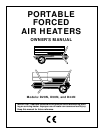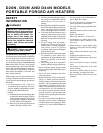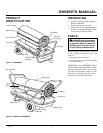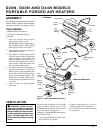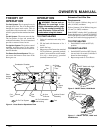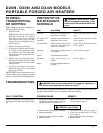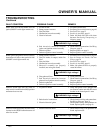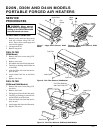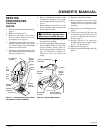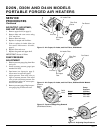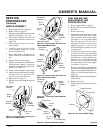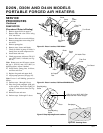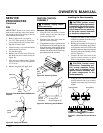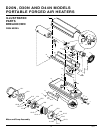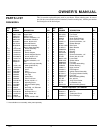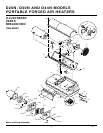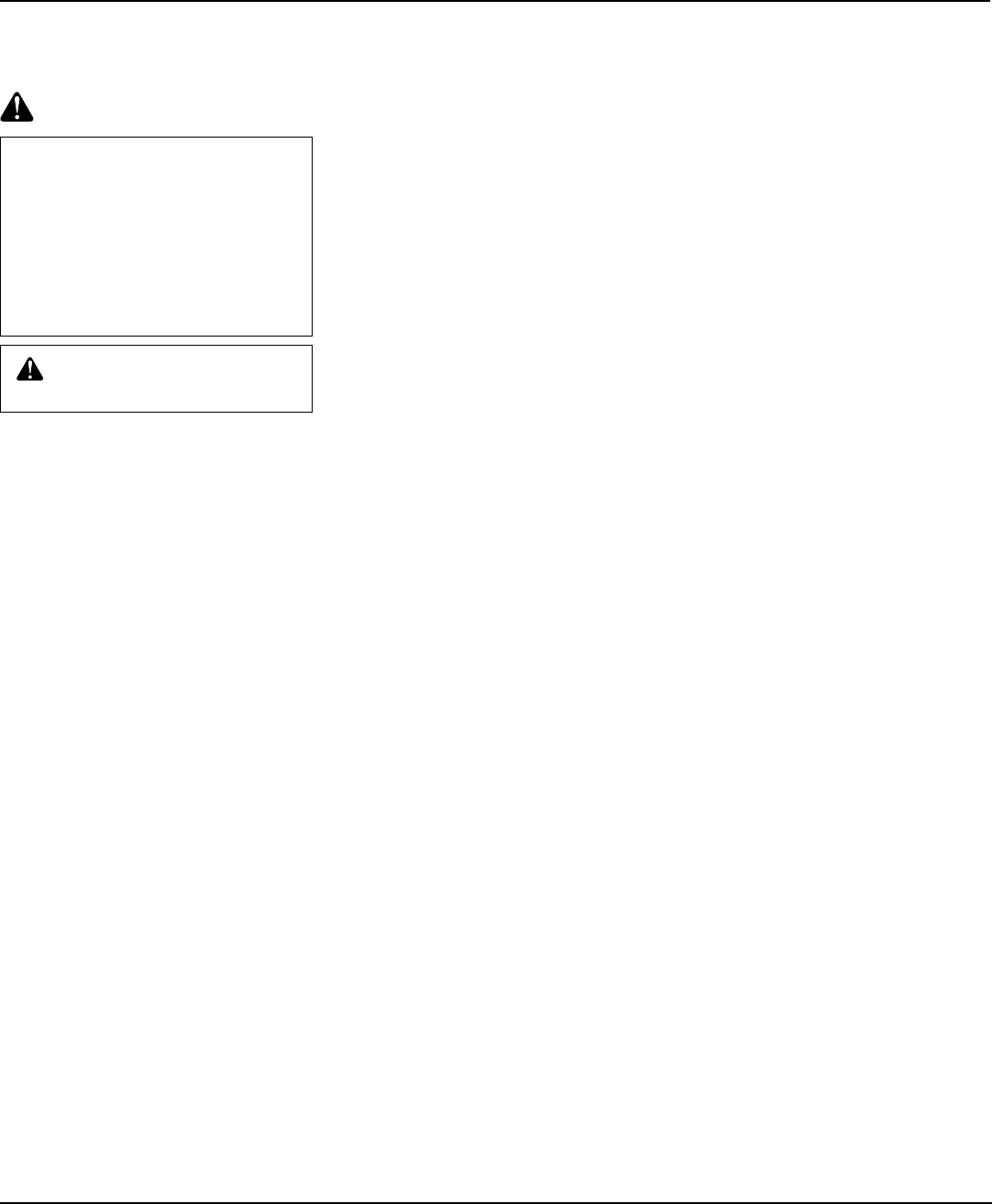
2
105843
PORTABLE FORCED AIR HEATERS
D20N, D30N AND D44N MODELS
SAFETY
INFORMATION
WARNINGS
IMPORTANT: Read this Owner’s
Manual carefully and completely
before trying to assemble, oper-
ate, or service this heater. Im-
proper use of this heater can
cause serious injury or death from
burns, fire, explosion, electrical
shock, and carbon monoxide
poisoning.
DANGER: Carbon monoxide
poisoning may lead to death!
Carbon Monoxide Poisoning: Early signs
of carbon monoxide poisoning resemble the
flu, with headaches, dizziness, and/or nau-
sea. If you have these signs, the heater may
not be working properly. Get fresh air at
once! Have heater serviced. Some people
are more affected by carbon monoxide than
others. These include pregnant women, per-
sons with heart or lung disease or anemia,
those under the influence of alcohol, and
those at high altitudes.
Make certain you read and understand all
warnings. Keep this manual for reference. It
is your guide to safe and proper operation of
this heater.
• Use only kerosene or No. 1 fuel oil to
avoid risk of fire or explosion. Never use
gasoline, naphtha, paint thinners, alcohol,
or other highly flammable fuels.
• Fueling
a) Personnel involved with fueling shall
be qualified and thoroughly familiar
with the manufacturer's instructions
and applicable regulations regarding
the safe fueling of heating units.
b) Only the type of fuel specified on the
heater's data plate shall be used.
c) All flame, including the pilot light, if
any, shall be extinguished and the
heater allowed to cool, prior to
fueling.
d) During fueling, all fuel lines and fuel-
line connections shall be inspected for
leaks. Any leaks shall be repaired
prior to returning the heater to service.
e) At no time shall more than one day's
supply of heater fuel be stored inside
a building in the vicinity of the heater.
Bulk fuel storage shall be outside the
structure.
f) All fuel storage shall be located a
minimum of 762cm (25 feet) from
heaters, torches, welding equipment,
and similar sources of ignition
(exception: the fuel reservoir integral
with the heater unit).
g) Whenever possible, fuel storage shall
be confined to areas where floor
penetrations do not permit fuel to drip
onto or be ignited by a fire at lower
elevation.
h) Fuel storage shall be in accordance
with the authority having jurisdiction.
• Never use heater where gasoline, paint
thinner, or other highly flammable vapors
are present.
• Follow all local ordinances and codes
when using heater.
• Heaters used in the vicinity of tarpaulins,
canvas, or similar enclosure materials
shall be located a safe distance from such
materials. The recommended minimum
safe distance is 304.8cm (10 feet). It is
further recommended that these enclo-
sure materials be of a fire retardant na-
ture. These enclosure materials shall be
securely fastened to prevent them from
igniting or from upsetting the heater due
to wind action.
• Use only in well-vented areas. Before us-
ing heater, provide at least a 2800 square
cm (three-square-foot) opening of fresh,
outside air for each 100,000 Btu/Hr of
rating.
• Use only in places free of flammable va-
pors or high dust content.
• Use only the electrical voltage and fre-
quency specified on model plate.
• Use only a three-prong, grounded exten-
sion cord.
• Minimum heater clearances from com-
bustibles:
Outlet: 250 cm (8 Ft.)
Sides, Top, and Rear: 125 cm (4 Ft.)
• Locate heater on a stable and level sur-
face if heater is hot or running or a fire
may occur.
• When moving or storing heater, keep
heater in a level position or fuel spillage
may occur.
• Keep children and animals away from
heater.
• Unplug heater when not in use.
• When used with thermostat, heater may
start anytime.
• Never use heater in living or sleeping
areas.
• Never block air inlet (rear) or air outlet
(front) of heater.
• Never move, handle, refuel, or service a
hot, operating, or plugged-in heater.
• Never attach duct work to front or rear
of heater.



